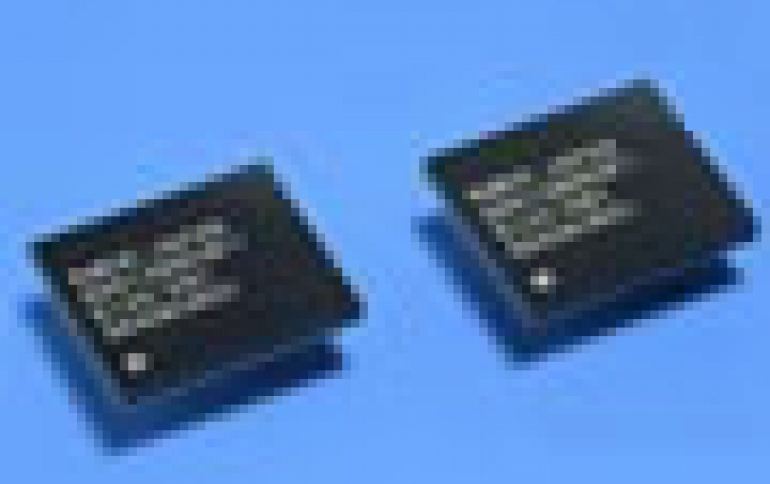
Toshiba, NEC and Fujitsu Agree on PSRAM Specifications for Mobile Devices
Toshiba, NEC, and Fujitsu have reached an agreement on standard interface specifications known as COSMORAM (COmmon Specifications for MObile RAM) Rev. 4, for Pseudo Static Random Access Memory (PSRAM) for use in mobile devices.
Based on these specifications, each of the three companies will independently begin production and sales of PSRAM devices, with products scheduled to be available from each company from March 2007.
The three companies first created common specifications in September 1998 for stacked multi-chip packages (MCPs) that include both Flash memory and SRAM. In March 2002 the companies jointly announced COSMORAM Rev. 1 with page mode specification for PSRAM, followed by the announcement of the addition of burst mode specification for PSRAM in February 2003 (Rev. 2), and additional specifications for burst mode PSRAM in September 2004 (Rev. 3). As a result of these agreements, the three companies share common interface specifications for PSRAM, which enables higher speeds and higher densities, and eliminates the need for customers to be concerned for compatibilities among the three companies' PSRAMs.
Pseudo SRAM (PSRAM) is an SRAM compatible memory that uses a DRAM cell array for high densities and low bit cost, and that can self-regulate the refresh operations necessary for data memory storage in its internal memory components.
The new COSMORAM Rev. 4 is a specification for PSRAM with double data rate burst (DDR burst) mode, which enables up to twice the previous data transfer rates. In addition, the short latency mode, which cuts initial access time to roughly half that of conventional products, improves effective bandwidth. These functions are optimal for mobile phones and mobile information terminals, which require ever-increasing levels of high-speed processing. Samsung also announced last September plans to release 256-Megabit Pseudo-SRAM kits for mobile phones.
The three companies first created common specifications in September 1998 for stacked multi-chip packages (MCPs) that include both Flash memory and SRAM. In March 2002 the companies jointly announced COSMORAM Rev. 1 with page mode specification for PSRAM, followed by the announcement of the addition of burst mode specification for PSRAM in February 2003 (Rev. 2), and additional specifications for burst mode PSRAM in September 2004 (Rev. 3). As a result of these agreements, the three companies share common interface specifications for PSRAM, which enables higher speeds and higher densities, and eliminates the need for customers to be concerned for compatibilities among the three companies' PSRAMs.
Pseudo SRAM (PSRAM) is an SRAM compatible memory that uses a DRAM cell array for high densities and low bit cost, and that can self-regulate the refresh operations necessary for data memory storage in its internal memory components.
The new COSMORAM Rev. 4 is a specification for PSRAM with double data rate burst (DDR burst) mode, which enables up to twice the previous data transfer rates. In addition, the short latency mode, which cuts initial access time to roughly half that of conventional products, improves effective bandwidth. These functions are optimal for mobile phones and mobile information terminals, which require ever-increasing levels of high-speed processing. Samsung also announced last September plans to release 256-Megabit Pseudo-SRAM kits for mobile phones.















